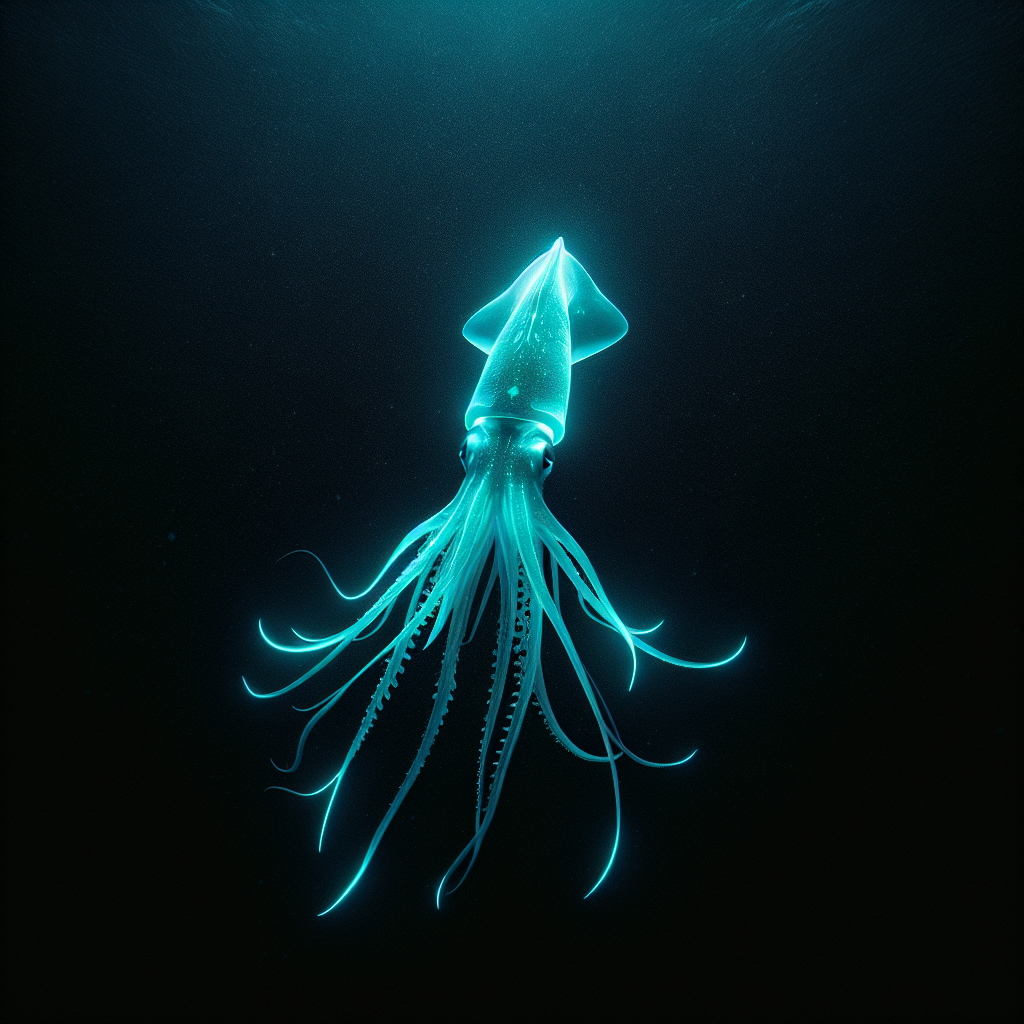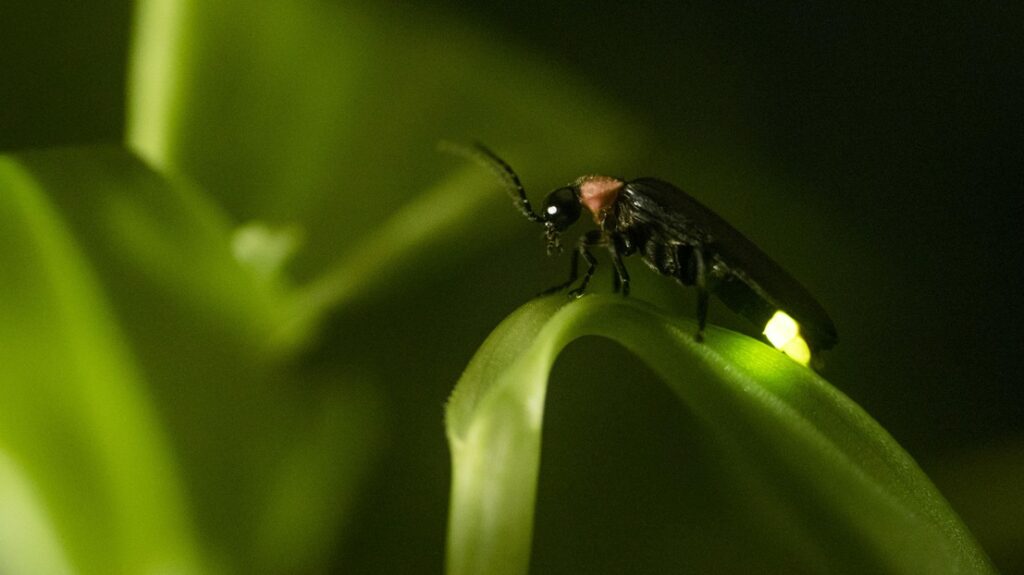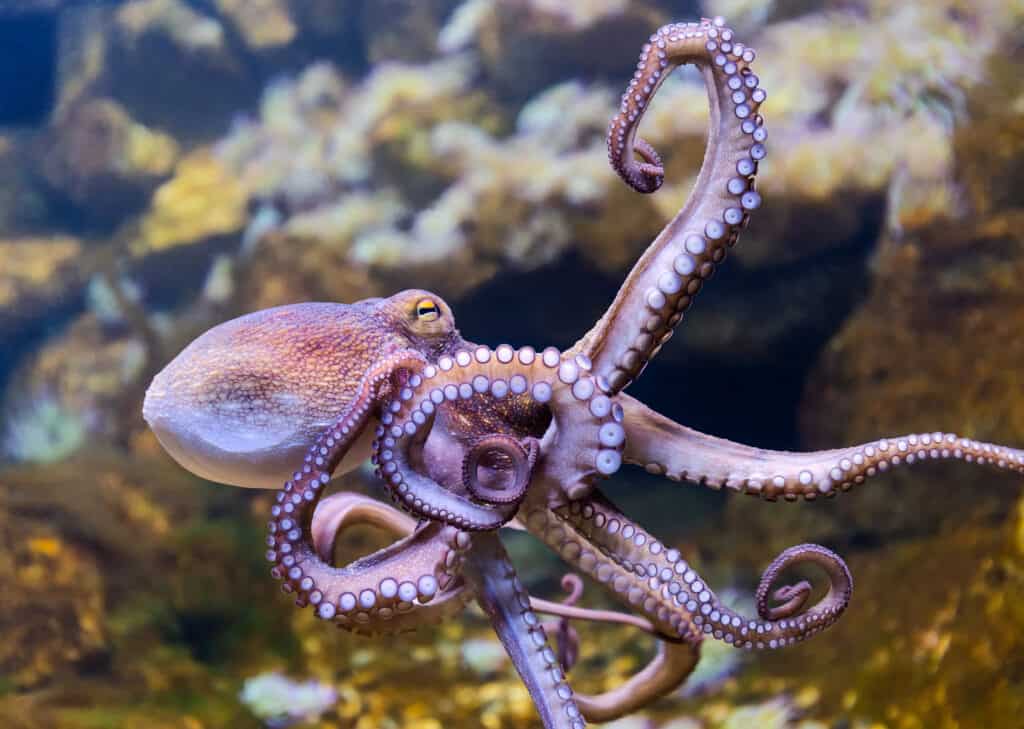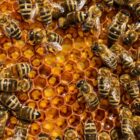Why do some animals glow in the dark? All about Bioluminescence

Bioluminescence refers to the ability of certain organisms to produce light through biochemical reactions within their bodies, and is observed in various organisms, from microscopic plankton to deep-sea creatures. This natural light production serves various purposes, from communication and camouflage to attracting prey or mates.
The process of bioluminescence involves a chemical reaction that releases energy in the form of light, resulting in the characteristic glow seen in bioluminescent organisms. The precise mechanisms and structures involved vary among species, leading to a diverse array of bioluminescent displays.
Research on Bioluminescence
In the 18th and 19th centuries, pioneers like J. Baker and Johann Florian Heller ventured into the realms of luminescence. Baker identified the flagellate Noctiluca as a “luminous animal”, offering a first glimpse into the microscopic mysteries of bioluminescent organisms, while Heller studied the luminous properties of fungi’s hyphae in dead wood.
Charles Darwin’s encounters with bioluminescence during his voyages added new dimensions to the narrative. His vivid descriptions of glowing seas and luminous marine life captured the imagination, sparking inquiries into the underlying mechanisms. Darwin’s keen observations laid a foundation for future investigations into the evolutionary significance of bioluminescence.
The 20th century heralded breakthroughs in understanding bioluminescence’s biochemical intricacies. Scientists like Osamu Shimomura isolated photoproteins from marine organisms, like the jellyfish Aequorea victoria, explaining the chemical choreography behind bioluminescent displays. Shimomura’s discoveries paved the way for deeper insights into the evolution and function of bioluminescence.
As researchers pieced together the evolutionary puzzle, contrasting theories emerged. Howard Seliger proposed luciferase enzymes’ pivotal role in bioluminescence’s evolution, linking it to enhanced visual signals in marine environments. Other researchers, on the other hand, highlighted the antioxidation defense’s shift towards bioluminescence as oceanic organisms adapted to deeper waters.
The Science Behind Bioluminescence
At the heart of this process are two key components: luciferin, a light-emitting pigment, and luciferase, an enzyme that catalyzes the reaction. The chemical mechanism of bioluminescence is diverse, with various luciferin/luciferase combinations exhibiting unique characteristics.
One common element in the bioluminescent process is the role of molecular oxygen (O2). This essential component plays a crucial role in the reaction, facilitating the conversion of luciferin to oxyluciferin and releasing light energy in the process. Additionally, certain cofactors such as magnesium (Mg2+), ATP (adenosine triphosphate), and calcium (Ca2+) may be required for specific bioluminescent reactions.
For instance, in fireflies, the luciferin/luciferase reaction involves magnesium and ATP, leading to the production of oxyluciferin, adenosine monophosphate (AMP), and pyrophosphate (PP) as byproducts. The reaction also generates carbon dioxide (CO2) as a waste product.
Interestingly, coelenterazine is a luciferin found in numerous marine species, ranging from comb jellies to vertebrates. This versatile pigment undergoes oxidation to produce light, contributing to the bioluminescent displays observed in these organisms. The jellyfish Aequorea victoria employs a unique photoprotein called aequorin instead of luciferase. When calcium ions are introduced, rapid catalysis occurs, resulting in a brief flash of light distinct from the sustained glow produced by luciferase.
Bioluminescence has evolved independently multiple times throughout evolutionary history, with over 40 documented occurrences. While luciferins like coelenterazine remain relatively consistent across various species and phyla, luciferase enzymes exhibit significant diversity and specificity, often differing between species.

How Common is Bioluminescence?
Bioluminescence is more prevalent in nature than one might imagine. In the vast expanse of the open sea, bioluminescence reigns as a common trait among numerous species. Fish, jellyfish, comb jellies, crustaceans, and cephalopod mollusks all partake in this luminous display. Surprisingly, about 76% of the main taxa of deep-sea animals in pelagic habitats possess the ability to produce light. In the marine coastal habitats, approximately 2.5% of organisms exhibit bioluminescence.
The pelagic zone, particularly in light-deprived depths and nocturnal surface waters, is teeming with bioluminescent activity. Diurnal vertical migrations play a crucial role in dispersing bioluminescent organisms across the water column, contributing to the mesmerizing glow observed in the open sea.
Bioluminescence manifests in a spectrum of colors, with most marine emissions falling within the blue and green range. However, exceptions exist, such as loose-jawed fish emitting red and infrared light, or the genus Tomopteris showcasing yellow luminescence. Dinoflagellates, found abundantly in surface sea layers, contribute significantly to the sparkling luminescence observed in disturbed waters.
Bioluminescence: How Do Animals Use Light?
The glow of bioluminescent organisms isn’t just a spectacle for human eyes; it’s a language, a survival tool, and a dance of light in the depths of nature. Across diverse ecosystems, from the ocean’s abyss to terrestrial realms, countless species harness bioluminescence for various purposes.
Light as Defensive Strategy
Deep-sea squids, such as those in the genus Loligo, are adept at using bioluminescence defensively. When threatened by predators, these squids release a luminous cloud, creating a dazzling distraction that confuses and disorients their enemies. This luminous smokescreen allows the squid to swiftly escape, leaving predators bewildered in the glowing mist.
Some species of luminous shrimp, like those in the genus Hoplophorus, have evolved a startle display using bioluminescence. When threatened or disturbed, these shrimp emit a sudden burst of luminous secretion from specialized light organs. This abrupt flash startles predators, providing the shrimp with a split-second advantage to evade capture and retreat to safety.
Certain jellyfish species utilize bioluminescence in defensive displays. When threatened, these jellyfish can emit sudden bursts of light, startling predators or potential threats. The luminous spectacle serves as a warning signal, deterring predators from approaching further or alerting nearby conspecifics to potential danger.
Lights of Love
Male fireflies take flight on warm summer evenings, emitting rhythmic flashes that punctuate the darkness like celestial Morse code. Each flash is a message, a signal of readiness and vigor.
The female firefly, grounded amidst the foliage, becomes the audience and the judge of this luminous performance. She watches keenly, awaiting the precise interval between flashes that signifies the ideal mate. It’s not just about the brightness or frequency of the flash; it’s the timing, the rhythm, the synchronization that speaks volumes in the language of firefly courtship.
Venturing into the depths of the ocean unveils a world where bioluminescence shapes courtship in unexpected ways. Female deep-sea anglerfishes, like the Ceratiidae family, possess bioluminescent appendages that dangle like glowing baubles in the dark waters. These lures, often shaped like prey or enticing morsels, draw potential mates closer. For males, spotting the right lure amidst the abyssal darkness is akin to finding a beacon of love in the vast oceanic expanse.
Bioluminescent Mimicry
The anglerfish and dragonfish, masters of aggressive mimicry, showcase this strategy with their bioluminescent esca. This specialized appendage, glowing with the help of bioluminescent bacteria, acts as a beacon of false hope for smaller creatures.
The South American giant cockroaches of the genus Lucihormetica were long believed to exhibit defensive mimicry through bioluminescence. It was thought that they emitted light akin to bioluminescent, poisonous click beetles, warding off potential predators.
Lantern fishes, hatchetfishes, and deep-sea anglerfishes flaunt intricate arrangements of light organs, each a masterpiece of evolution. These luminous displays aren’t just for show; they serve as species and sex recognition patterns, aiding in camouflage and communication in the abyssal darkness.
Female Photuris fireflies employ mimicry to the utmost advantage, imitating the light patterns of another firefly species, Photinus. By mimicking their prey’s signals, these cunning females attract male Photinus fireflies, not for romance but as a source of food.
Light as Communication
Bacteria engage in a form of communication known as quorum sensing, intricately linked to luminescence regulation. When cell density reaches a threshold, small molecules are secreted extracellularly, signaling the activation of genes responsible for light production. This collective behavior allows bacteria to synchronize luminescence, serving various functions from defense to resource utilization.
Pyrosomes, colonial tunicates resembling glowing cylinders in the ocean depths, exemplify the orchestration of light for communication and coordination. Each zooid within the colony possesses luminescent organs, responding to light stimuli by rhythmic flashing. Remarkably, no direct neural pathway connects these zooids, yet they synchronize their luminescent displays.
Various species of fungi emit bioluminescence, drawing night-flying insects to aid in spore dispersal. Genera like Armillaria, Mycena, and Pleurotus utilize luminescence not only for attracting potential dispersers but also potentially for other ecological functions yet to be fully understood.
Quantula striata, a unique mollusk, emits pulses of light from a gland near its foot. While the adaptive significance of this light emission remains a mystery, it likely serves a communicative function within its ecological niche. The pulsating glow may convey messages to conspecifics or potential mates, highlighting the diversity of light-based communication strategies even on land.










